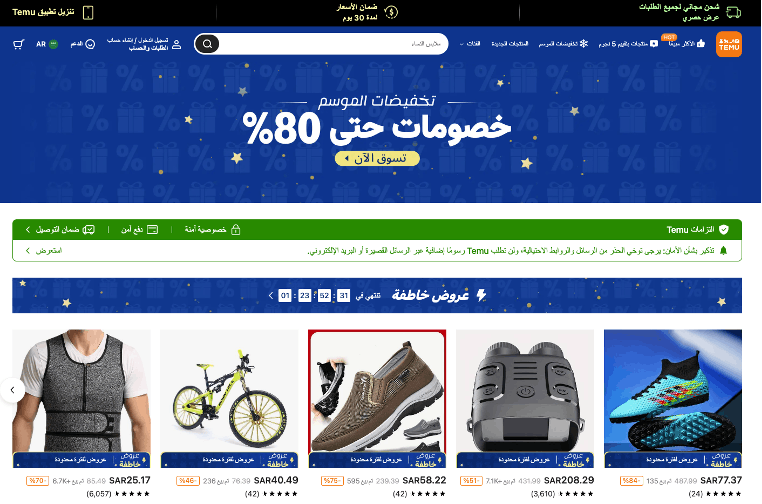Designing for the world: How to achieve culturally attuned UX
In a world where fundamental usability guidelines are universally applicable, cultural details and nuances – from reading patterns to language intricacies – can impact the effectiveness of your product’s UX. The key to a successful product is not only to standardize but to empathize and adapt to the cultural and linguistic subtleties of your demographic reach.
Imagine this: you’re trying to grow your company by dipping your toes into a global market. Your plan is to launch your products in the Middle East and East Asia. However, you find that your websites end up not performing as well as they do in the North American domestic market. What may be causing your failure is your lack of understanding surrounding your demographic profile, especially in the digital space, ultimately inhibiting you from resonating with these diverse user groups. An immediate solution to this would usually be translating content into local languages – but, as you likely guessed, it’s more than just that. The most effective UX designs are those that are culturally attuned.
The secret to unlocking effective user experiences lies in blending language localization with cultural understanding. To achieve this, companies must move beyond mere translation and surface-level references. Instead, product leaders must integrate linguistic contexts and cultural dimensions into their UX. This goal goes beyond just enhancing and improving user satisfaction; it’s a strategic move to build lasting global reach.
Where in the world do I start (literally)?
According to Nielsen Norman Group, there are two adaptation approaches when it comes to launching digital products with cross-cultural audiences:
- Translating the user interface language depending on the target audience. The presentation of the product remains the same with only the language being different.
- Localizing the digital product to be culturally relevant to the target audience. This includes changes to visual presentation, use of color, content strategy, or user interface elements.
We can think of these two approaches as two ends of a spectrum. Most companies who are seeking to be more globally recognized will aim to fall at a point in this spectrum that is both affordable and feasible. This means that we need to ensure that UI copy is not only translatable but also localizable by choosing culturally significant colors, being mindful of image choices, and considering the preferred technologies in different countries.
Regardless of where a UX design solution falls on this spectrum, it’s crucial to maintain a thoughtful balance between language adaptability and cultural sensitivity, ensuring that the product, in whatever shape or form, resonates universally while honoring local nuances.
Behavioral Science, Democratized
We make 35,000 decisions each day, often in environments that aren’t conducive to making sound choices.
At TDL, we work with organizations in the public and private sectors—from new startups, to governments, to established players like the Gates Foundation—to debias decision-making and create better outcomes for everyone.
How can we achieve seamless digital usability on a global scale?
At its core, digital usability is universal. We can expect all users, no matter where they live, to want a seamless experience on an e-commerce website. But what exactly does “seamlessness” entail in UX and how does each product achieve this depending on the country it exists in?
In behavioral science, the way users interact with technology can vary significantly based on cultural norms – which is crucial when adapting your product’s UX to different contexts. This idea aligns with human-computer interactions (HCI), which are based on how humans interact with computers in a way that transcends cultural boundaries. However, while the general endpoint of interactions remains the same across countries, the success of this depends on everything surrounding it. Each culture may have its own interpretation of what “seamless” really means, which emphasizes the importance for designers to understand and cater to these diverse expectations.
For instance, Hofstede’s cultural dimensions theory offers insights into how different cultures interact with digital products. On one hand, cultures with high uncertainty avoidance such as Japan prefer clear, detailed information and step-by-step guidance. As a designer, this should influence the layout and design choices by, for example, being more structured, providing detailed instructions, and avoiding ambiguity in interface layouts and functionality. On the other hand, cultures with lower uncertainty avoidance such as the United States are more likely to welcome exploratory interfaces and innovative features that are flexible and dynamic.
Adapting to reading patterns and language structures
Next up, the language and content are where cultural differences really come into play. Behavioral science tells us that language structure and reading patterns are not just linguistic traits but are rooted in cognition and perception. For instance, Arabic often employs a more flowery, lengthy writing style, while English prefers conciseness with sufficient context. This is more than just a linguistic preference; it reflects deep cultural values and communication styles. That’s why mere translation using a digital tool is not sufficient to effectively communicate the nuances.
Delving deeper, Arabic, which is read right-to-left, requires a mirrored approach to the F-shaped reading pattern commonly found in left-to-right languages like English. This has implications for everything from the placement of items on a fast food menu to the layout of content and images on a website or mobile app.
Take, for example, the e-commerce website Temu. When it’s set in Canada with English as the language, the layout consists of the logo on the far left and the shopping cart on the far right. However, when switching to Saudi Arabia with Arabic as the language, you can see how the layout flips to the exact reverse of the English version.

[Country and language: Canada, English]

[Country and language: Saudi Arabia, Arabic]
But it's not just about the words we use; it's also about how we present information. Asian homepages, for instance, tend to be content-dense, resembling paper catalogs. Meanwhile, Western sites lean towards a more content-light and minimalistic design, avoiding “clutter.” This isn’t just an aesthetic choice but rather a reflection of how different cultures process and perceive information. Furthermore, this difference in processing is intertwined with broader cultural dimensions, such as individualism versus collectivism which profoundly affects communication styles and preferences.

[Taobao, a Chinese online shopping platform]

[Amazon, American multinational e-commerce shopping platform]
Now, beyond geographical considerations and how products are laid out on a website, UX design must also navigate and incorporate non-geographical cultural elements related to professions, gender, age, socio-economic backgrounds, and internet culture. This involves conducting thorough research to understand these diverse perspectives and integrating them into design decisions, ensuring a truly inclusive user experience.
This doesn’t go without saying that achieving digital usability globally comes with its set of pragmatic limitations, including technological disparities, language diversity, and regulatory environments. Acknowledging these challenges upfront allows for strategic planning to mitigate their impact, ensuring that global usability goals remain realistic and achievable.
Your next steps in achieving culturally attuned UX design
- Conducting usability testing with participants from diverse cultural backgrounds, uncovering specific needs and preferences that can inform your design choices (and maybe even marketing strategies!).
- Engage in continuous learning by attending workshops and seminars on cross-cultural UX design, ensuring you remain at the forefront of cultural behavior and product design insights.
- Collaborate with cultural experts and linguists when expanding into new markets; their deep understanding of local customs, language nuances, and societal norms will be invaluable in appropriately adapting your product.
- Finally, embrace multiple iterations based on user feedback from international audiences, using surveys, forums, and beta testing to refine your designs continually. This iterative process, informed by direct user insights, will ensure your designs resonate deeply across cultural boundaries, paving the way for truly inclusive and engaging digital experiences around the globe.
Here at TDL, our global expertise is at the core of integrating research insights into UX design. With employees and clients spanning across every continent, our products are tailored to navigate the complexities of international markets. Our deep understanding of cultural differences is critical to our mission of creating impactful and inclusive experiences for users around the world. By partnering with us, you’ll ensure your products resonate with audiences no matter where they are.
About the Author
Vivian Zheng
Vivian is a Behavioural Product Designer and the UX Lead at The Decision Lab. She is passionate about combining behavioural science and design with UX practices to best represent the users and guide them empathetically to their end goal. Vivian graduated from Ryerson University with a Bachelor’s in Business Management-Human Resources.





